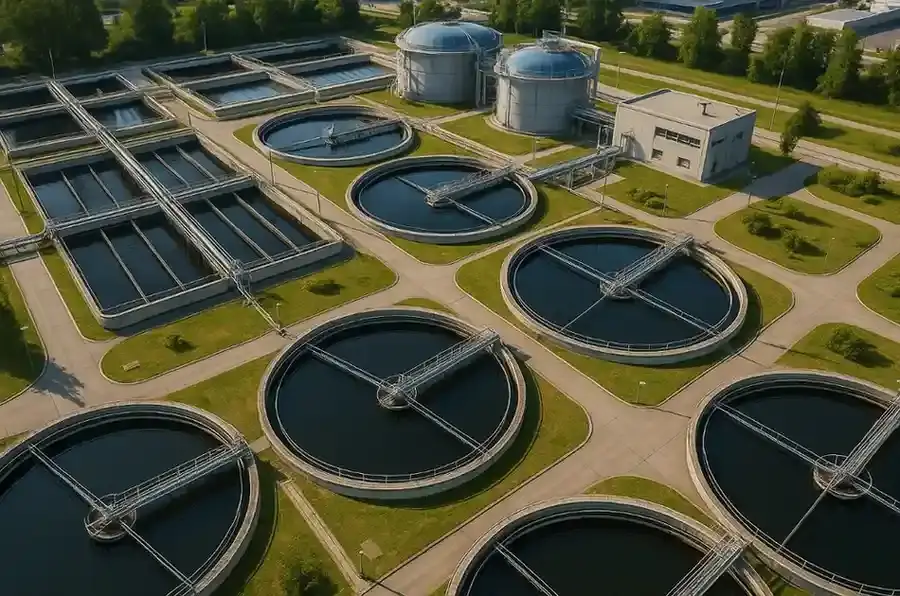share
LATEST
Water Treatment Plant (WTP): Complete Guide, Stages & Importance
Sept. 28, 2025
112 Views
Water is essential for life, industries, and agriculture. However, raw water from rivers, lakes, or wells contains impurities that must be removed before use. This is where a Water Treatment Plant (WTP) comes into play.
A WTP purifies water, making it safe for drinking, industrial, and agricultural purposes. Understanding what a water treatment plant is, the stages involved, and how it works is essential for municipal authorities, industries, and businesses.
In this guide, we’ll cover:
-
What is a water treatment plant?
-
The 7 steps of a water treatment plant
-
Stage 4 water treatment explained
-
WTP plant meaning
-
Safety and benefits of treated water
👉 For professional water treatment solutions, visit Plumint or directly register as a subscriber.
What is a Water Treatment Plant?
A Water Treatment Plant (WTP) is a facility that removes impurities from raw water to make it safe, potable, and suitable for industrial or commercial use.
Key functions of a WTP include:
-
Removal of suspended solids, sediments, and turbidity
-
Elimination of pathogens and harmful microorganisms
-
Chemical treatment to adjust pH and hardness
-
Production of clean water for drinking, industrial use, or irrigation
WTPs are crucial for maintaining public health, environmental sustainability, and compliance with water quality standards.
What is Meant by WTP Plant?
WTP stands for Water Treatment Plant, so the term “WTP plant” is often used interchangeably. While it may sound repetitive (“plant plant”), it is widely recognized in industrial, municipal, and commercial contexts.
-
WTP plants are installed by municipalities, industries, and commercial complexes.
-
They ensure continuous water supply with regulated quality parameters.
-
Modern WTPs often include automation, IoT monitoring, and advanced filtration systems.
What are the 7 Steps of a Water Treatment Plant?
Water treatment involves multiple steps to remove contaminants and ensure water safety. The seven main stages are:
1. Screening
-
Removes large debris such as sticks, leaves, plastics, and stones.
-
Prevents damage to pumps and downstream equipment.
2. Coagulation
3. Flocculation
4. Sedimentation
5. Filtration
-
Water passes through sand, gravel, and activated carbon filters.
-
Removes remaining suspended solids, turbidity, and odors.
6. Disinfection
-
Chlorine, UV, or ozone is used to kill bacteria, viruses, and other pathogens.
-
Ensures the water is microbiologically safe.
7. Storage & Distribution
-
Treated water is stored in reservoirs or tanks.
-
Distributed to households, industries, or commercial users.
What is Stage 4 Water Treatment?
Stage 4 refers to sedimentation in a WTP.
-
In this stage, flocculated water is allowed to rest in sedimentation tanks.
-
Heavier particles settle at the bottom forming sludge.
-
The clarified water moves on to filtration and disinfection.
Stage 4 is critical because:
-
It reduces turbidity significantly.
-
Ensures that filtration systems work efficiently.
-
Minimizes chemical usage in later stages.
Types of Water Treatment Plants
Water treatment plants can be classified based on:
1. Municipal WTPs
2. Industrial WTPs
-
Supply water for industries like food, beverage, textiles, and pharmaceuticals.
-
Often customized for water hardness, TDS, and chemical content.
3. Package WTPs
-
Compact units for residential complexes, hotels, and commercial buildings.
-
Easy installation and maintenance.
4. Reverse Osmosis (RO) WTPs
Benefits of a Water Treatment Plant
-
Safe Drinking Water – Eliminates bacteria, viruses, and chemical contaminants.
-
Public Health – Reduces waterborne diseases like cholera, typhoid, and diarrhea.
-
Industrial Efficiency – Reduces scaling and corrosion in boilers, cooling towers, and machinery.
-
Environmental Protection – Prevents untreated wastewater from polluting rivers and lakes.
-
Sustainable Water Reuse – Treated water can be used for irrigation and industrial purposes.
Challenges in Water Treatment
-
High Initial Costs – Large-scale WTPs require significant investment.
-
Maintenance – Requires trained personnel and regular monitoring.
-
Chemical Handling – Proper storage and dosing of chemicals is essential.
-
Sludge Management – Settled solids need proper disposal or treatment.
👉 Businesses can reduce these challenges by consulting experts like Plumint.
Modern Trends in Water Treatment
-
Automation and IoT – Real-time monitoring of flow, TDS, pH, and turbidity.
-
Compact WTP Units – Prefabricated systems for commercial and residential use.
-
Advanced Filtration – Activated carbon, ultrafiltration, and membrane technology.
-
Energy Efficiency – Solar-powered pumps and aeration systems.
-
Water Recycling – Integration with sewage treatment for sustainable reuse.
Water Treatment Plant for Residential and Commercial Use
-
Residential WTPs: 10–100 KLD capacity for apartment complexes.
-
Commercial WTPs: Hotels, malls, and hospitals require 50–500 KLD.
-
Industrial WTPs: Customized based on effluent quality and water hardness.
Proper implementation ensures compliance with water quality standards and reduces operational risks.
FAQs (People Also Ask Section)
1. What is the water treatment plant?
A WTP removes contaminants from raw water to provide safe drinking and usable water for households, industries, and agriculture.
2. What are the 7 steps of a water treatment plant?
Screening, Coagulation, Flocculation, Sedimentation, Filtration, Disinfection, and Storage & Distribution.
3. What is stage 4 water treatment?
Stage 4 is sedimentation, where floc particles settle in tanks before filtration.
4. What is meant by WTP plant?
WTP stands for Water Treatment Plant, a facility for treating raw water into safe, potable water.
Conclusion
A Water Treatment Plant (WTP) is essential for ensuring safe, clean, and sustainable water. From municipal to industrial and residential applications, WTPs protect public health, support industry, and conserve resources.
👉 For professional water treatment solutions and subscription-based services, visit Plumint or register at Plumint Subscriber Registration.
share Share now









